Update September 2024: Wide shared paths no longer included.
The Tasmanian government is planning upgrades to the pedestrian and cycle pathways on Hobart’s Tasman Bridge.
What’s wrong with the existing Tasman Bridge pathways?
The existing pedestrian & bike pathways on the Tasman Bridge are very narrow — 820 mm at one point, equivalent to the wider end of the range in mountain bike handlebar widths. They’re also partially obstructed at points by gantries, slippery in the wet, very exposed to the wind and poorly lit at night. Passing is difficult. Injuries are common. It is by far the most listed unsafe spot in Hobart on BikeSpot. For decades this has discouraged many people from walking or riding across the bridge. This has resulted in more people driving cars and is a contributor to traffic congestion.
As well, the current safety barriers are inadequate. A 2016 coronial inquest recommended structural modifications to the Tasman Bridge (coronial findings — be aware it covers sensitive issues).
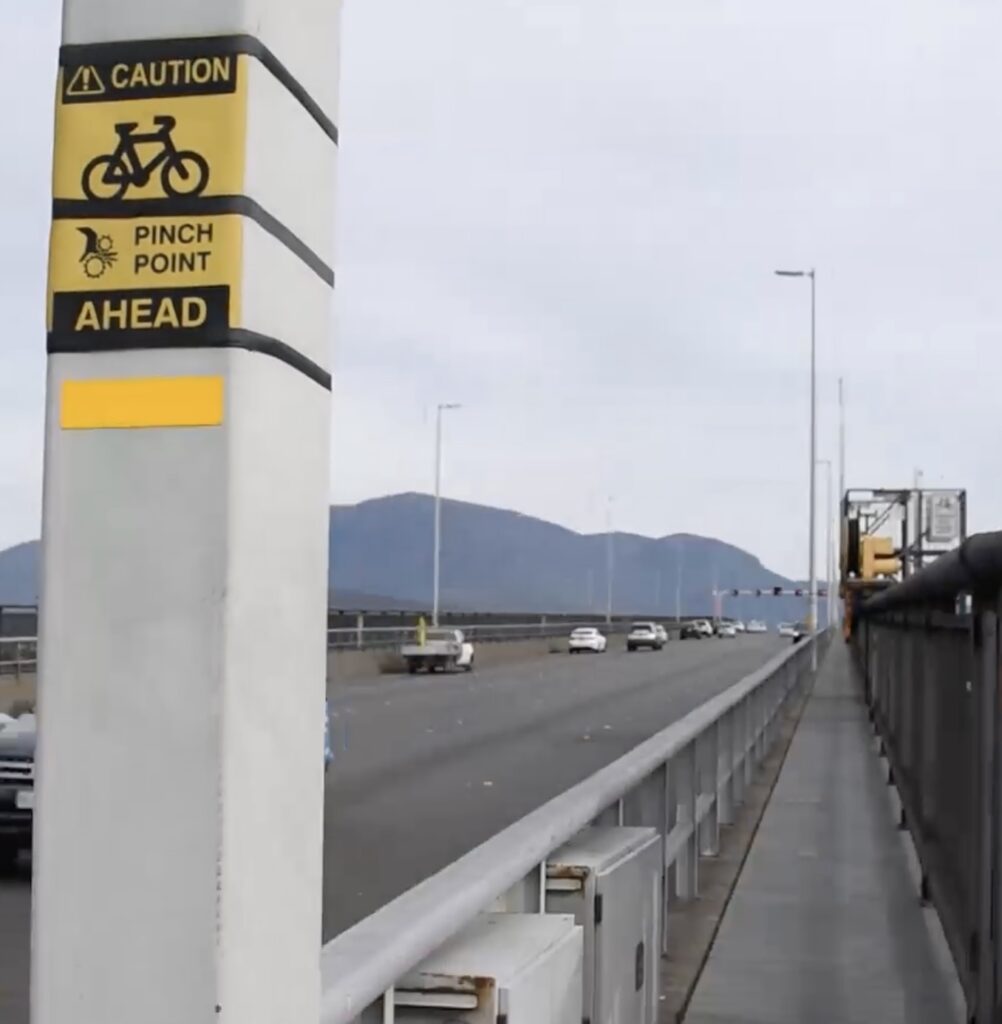
The original upgrade plan
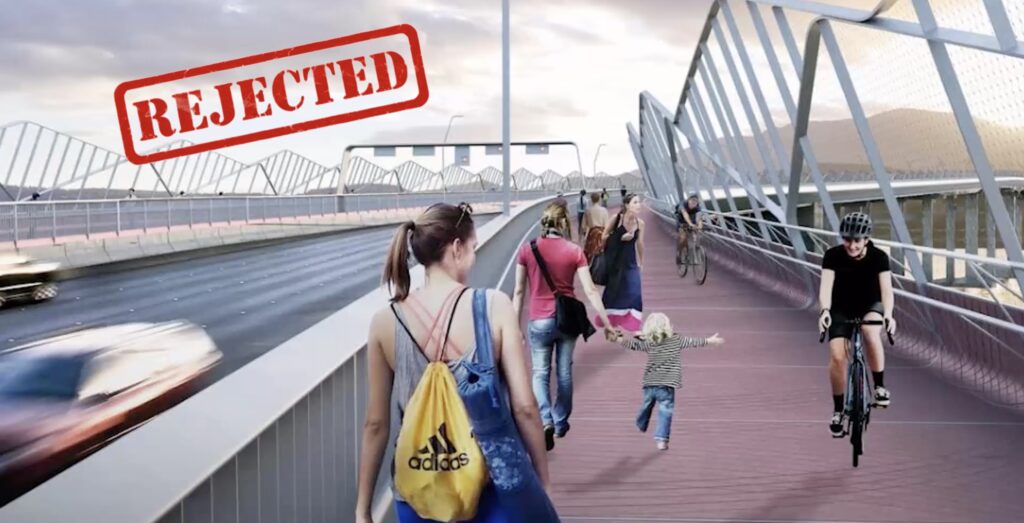
The original upgrade plan included:
- Wider shared paths for pedestrians & cyclists — 3.5 m wide on both sides of the bridge (existing paths are about 1 m) with better connections to bike paths on the eastern & western shores
- Higher barriers — improved safety & wind protection
- Path lighting improvements
- Automating switchover of the centre traffic lane
- Electronic signage improvements
- Realtime monitoring of traffic & wind
- Bridge strengthening — to support both the new pathways & increased traffic
“Unfortunately, detailed investigations show that the planned, wider pathways cannot be installed along the full length of the bridge without significantly modifying its structure. This work is not funded and would cost far more than the project’s budget.”
Department of State Growth, 23 September 2024
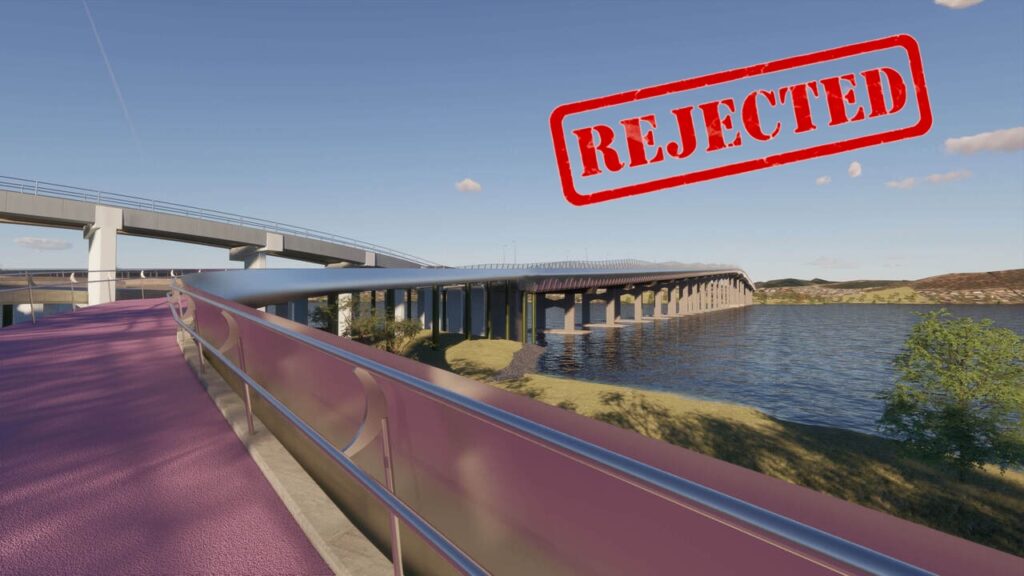
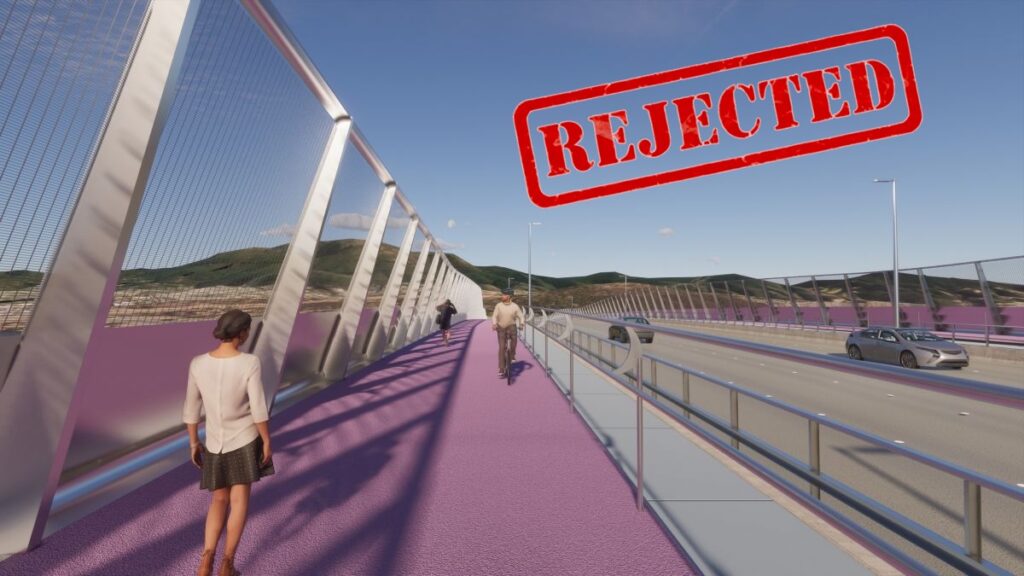
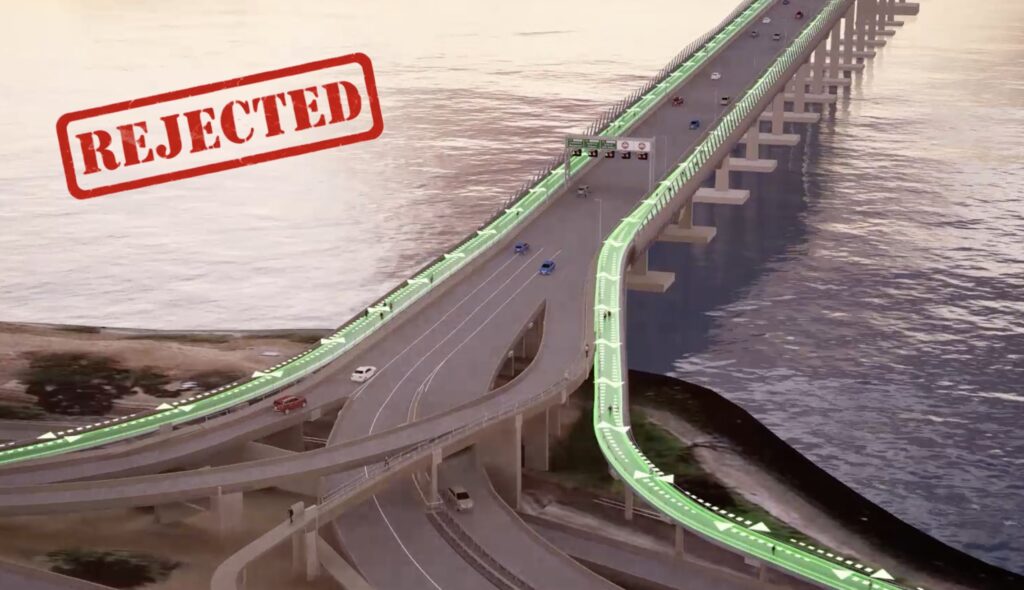
The revised upgrade plan
The revised upgrade plan does away with the wide shared pathways and focuses on:
- Raising the height of the safety barriers on both sides of the bridge pathways.
- Improving pathway connections on the eastern and western shores.
- Installing passing bays.
- Exploring one-way pathway options with key stakeholders.
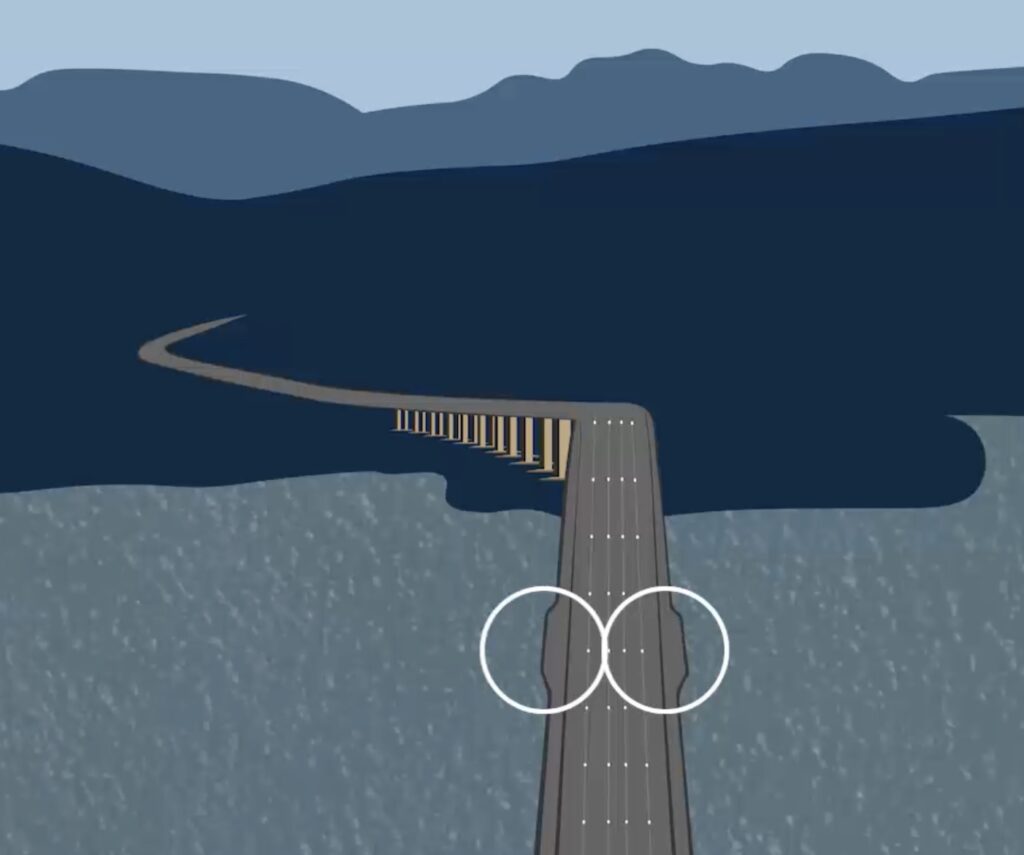
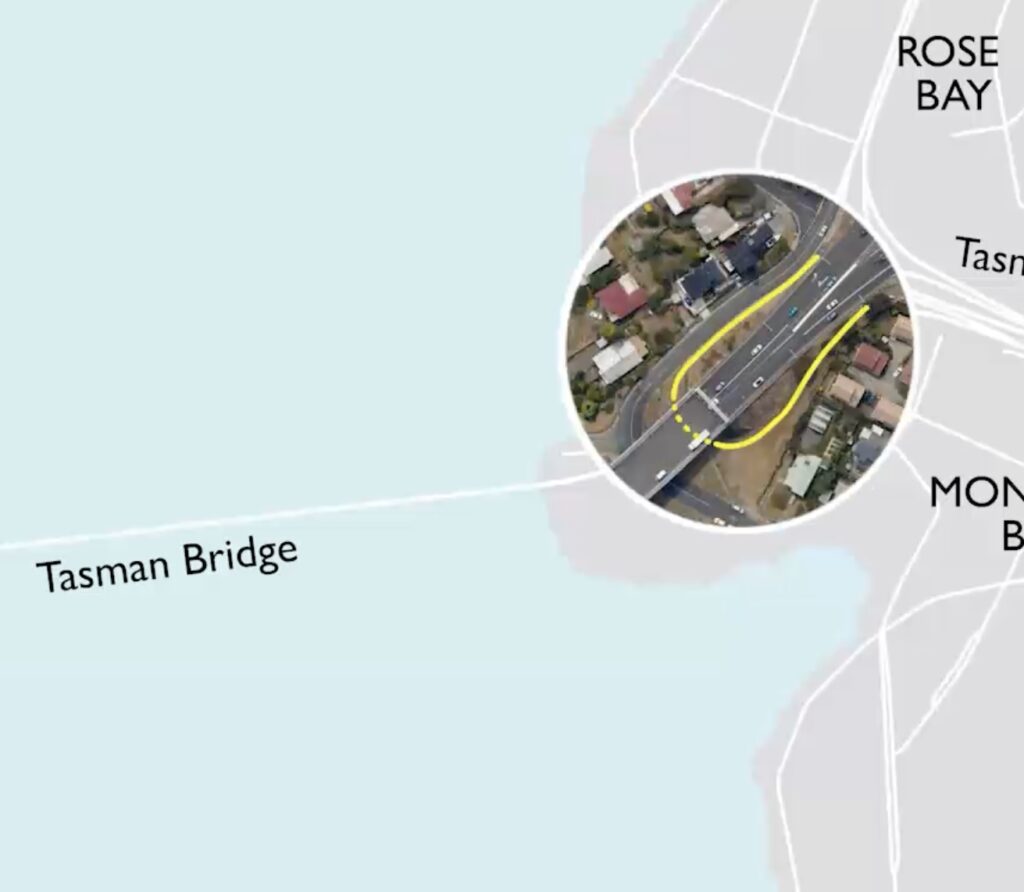
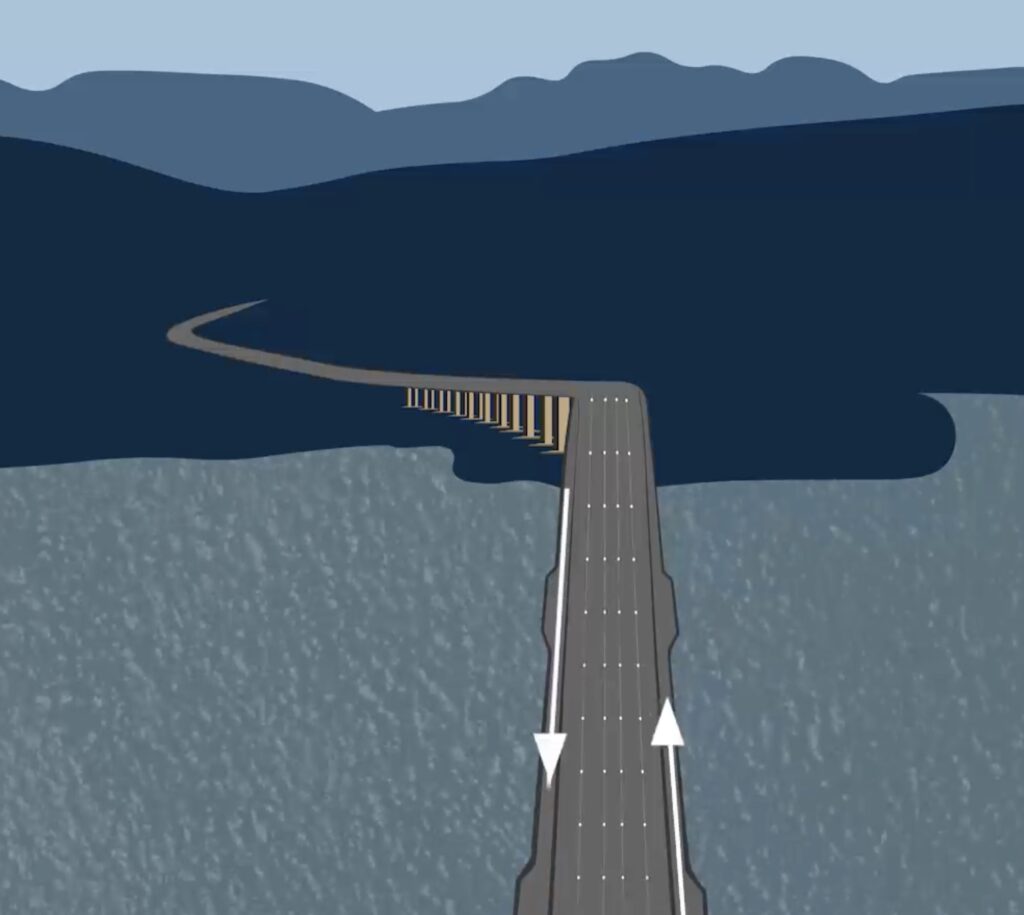
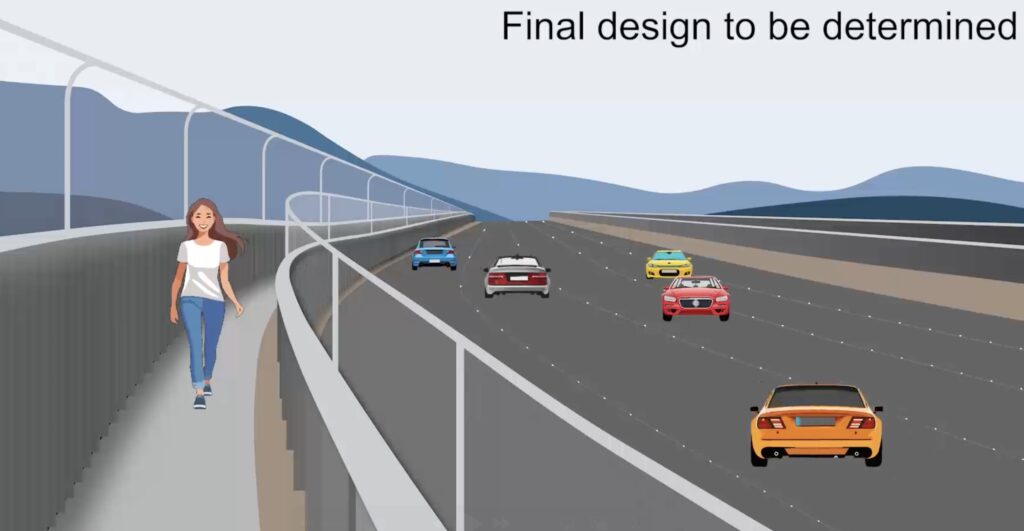
Traffic improvements are continuing as planned:
- Strengthening of the bridge’s deck to maintain the lifespan of the bridge and to allow for the current high volume of traffic to continue for many years to come.
- Upgrading the bridge’s lane use management system for better traffic control during peak periods and incidents.
- Additional planning work will make recommendations on what needs to be done to manage the bridge for the rest of its life and what the future of the crossing should be.
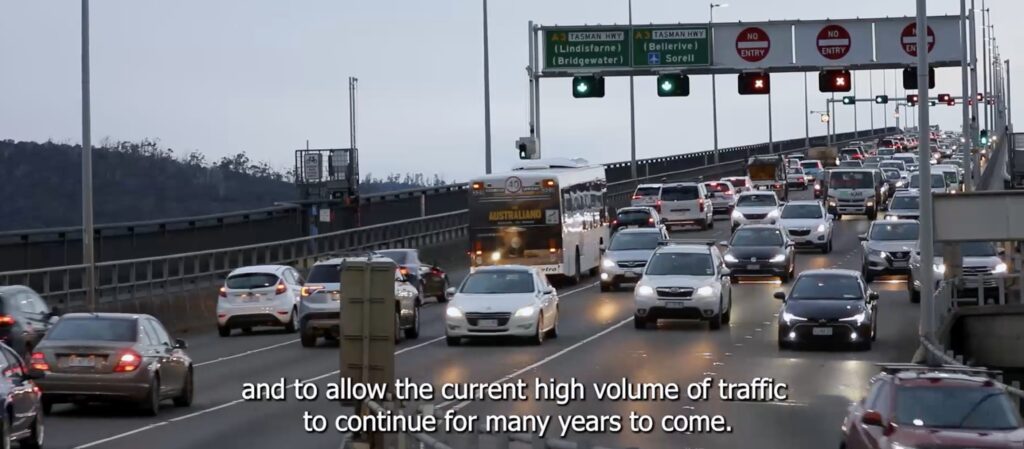
The Department of State Growth has released a video explaining the changes to the plan:
Our thoughts
The good
- Higher barriers will make the bridge safer.
- The barriers could be designed to offer wind protection.
- Better pathway connections should eliminate the existing dangerous crossing of the 70 km/h Domain–Tasman Highways connector.
- One way pathways will be helpful if people follow them — well designed connections might encourage this.
- Passing bays will be useful in proportion to their length.
The bad
- The pathways will still be far too narrow with multiple obstructions. Injuries will still occur.
- It’s hard to imagine it won’t feel like walking and riding in a cage.
- The paths won’t be AAA standard as specified in the Greater Hobart Cycling Plan. This will leave a critical gap in the bike network.
- Active transport saves society money, government should be investing in it.
- We’ve been waiting decades.
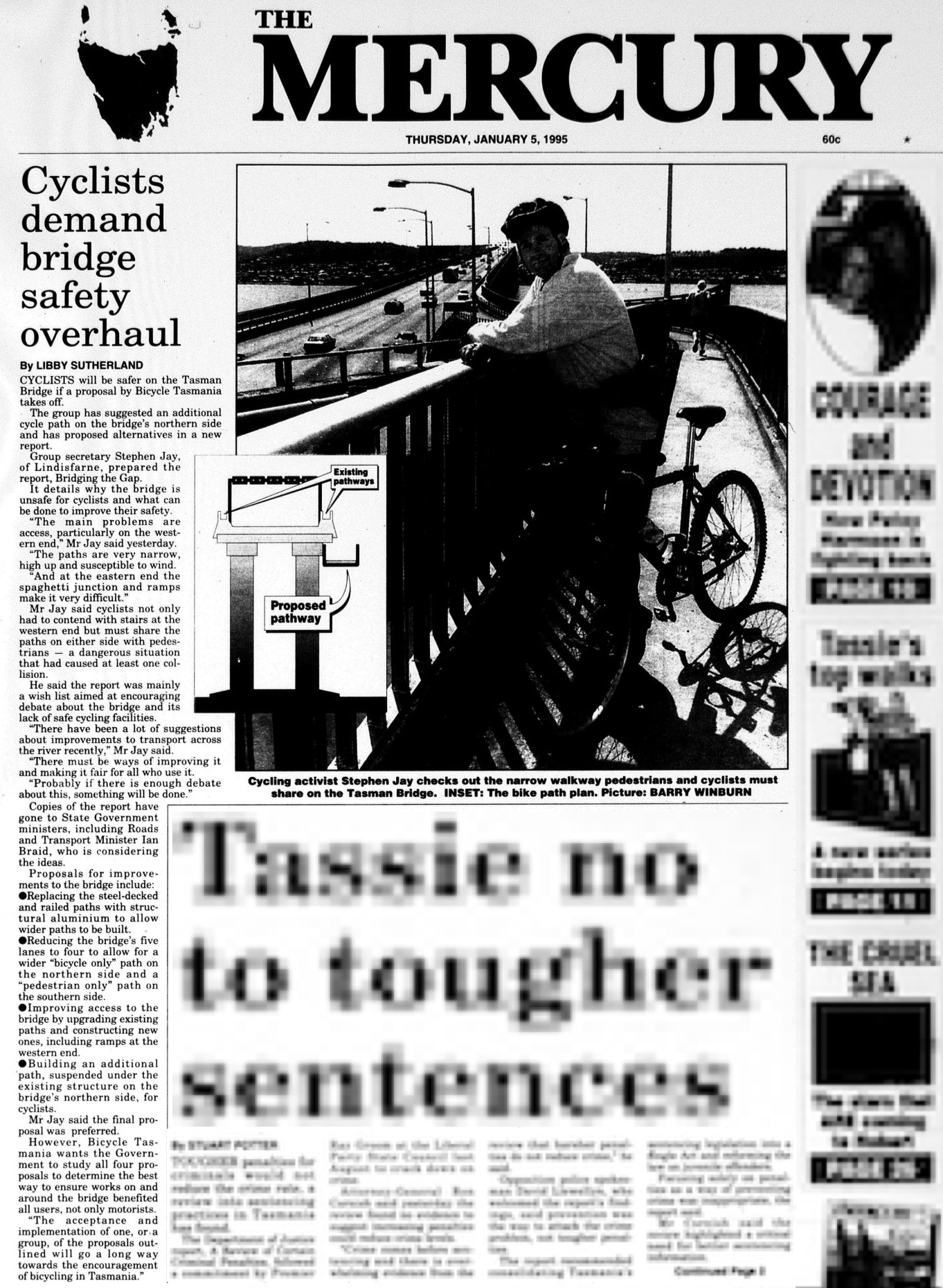
Alternatives
- Converting a traffic lane to a bidirectional shared path has been suggested. With an appropriate barrier this could be safe, though not necessarily pleasant. Reassigning a portion of the space used for traffic to enable safe active transport is rational. It won’t happen. To be fair, a better change would be to convert a lane in each direction to transit lanes to enable bus rapid transit.
- Ferries could fill this gap in the active transport network to an extent if they were frequent for most hours of every day. Notably the master plan is focused on services at peak times.
The bigger picture
- The Tasman Bridge is no longer fit for purpose for this and other reasons.
- The government needs to plan an additional bridge or a replacement bridge.
- An additional bridge could have a transit lane plus 2-3 general traffic lanes all in one direction, as well as separate walking & cycling paths. The Tasman Bridge could then be converted to a transit lane plus 2-3 general traffic lanes in the opposite direction.
- A replacement bridge could have this capacity on one bridge with the added benefit of a wide shipping channel so ships like the Nuyina can refuel at Selfs Point.
Where’s it up to?
The revised upgrade plan will be open for community feedback soon.
Pathway connections and higher barriers will be installed starting in 2025.
Previously:
- Initial community consultation occurred in mid 2022 — here’s the summary of the findings.
- Funded $65 million each from the Australian and Tasmanian governments. The project subsequently became delayed by a prolonged Australian government review into funding of infrastructure projects — results of the review released on 16 November 2023 again confirmed the funding.
- Was expected to take two years to build. Originally building was due to start mid 2023 and finish late 2025.
- Tender documents were being prepared for Stage 1 — Lane use management system & real-time monitoring. The tender was due to be released mid-2024.
- Further designs were being prepared for Stage 2 — Bridge strengthening & pathway construction. Stage 2 was expected to go to tender early 2025.
- 23 September 2024 — it was revealed the original plans for wide shared paths would not be going ahead.
What can I do?
Let elected Tasmanian parliament members know how important it is to be able to safely walk and ride across the bridge — see our Get Involved page for some options.
More info
Tasmanian government project page
Email tasmanbridgepathways@stategrowth.tas.gov.au
Serious consideration should be in the pipe line for the entire Tasman Bridge to be replaced at some point in the not too distant future – say by 2055. It opened in 1965 and due to being compromised in 1975 by the collision and partial collapse its engineered life span has been likely shorted. Tasmanian governments from both sides of the fence are very poor visionaries and this crucial transport link cannot at any cost be ignored. Playing patch up will not address the problems and needs for the next generation. As Greater Hobart may exceed 400,000 by mid century issues related to the eventual Tasman Bridge replacement will become more evident before safety issues, the growing needs for a transforming city and even possible catastrophic infrastructure failure.